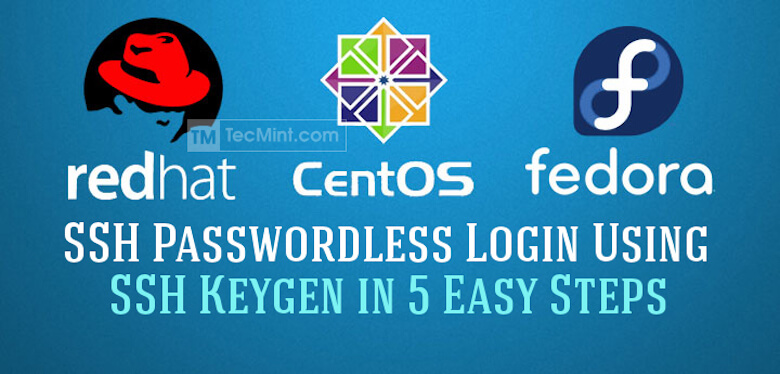SSH Passwordless Login Using SSH Keygen in 5 Easy Steps
| Attachment '1' |
|
|---|

SSH (Secure SHELL) is an open source and most trusted network protocol that is used to login into remote servers for execution of commands and programs. It is also used to transfer files from one computer to another computer over the network using secure copy (SCP) Protocol.
In this article we will show you how to setup password-less login on RHEL/CentOS 7.x/6.x/5.x and Fedora using ssh keys to connect to remote Linux servers without entering password. Using Password-less login with SSH keys will increase the trust between two Linux servers for easy file synchronization or transfer.
My Setup Environment
If you are dealing with number of Linux remote servers, then SSH Password-less login is one of the best way to automate tasks such as automatic backups with scripts, synchronization files using scp and remote command execution.
In this example we will setup SSH password-less automatic login from server 192.168.0.7 as user picomax to 192.168.1.240 with user hooni.
Step 1: Create Authentication SSH-Kegen Keys on – (192.168.0.7)
First login into server 192.168.0.7 with user picomax and generate a pair of public keys using following command.
Step 2: Create .ssh Directory on – 192.168.1.240
Use SSH from server 192.168.0.7 to connect server 192.168.1.240 using hooni as user and create .ssh directory under it, using following command.
Step 3: Upload Generated Public Keys to – 192.168.1.240
Use SSH from server 192.168.0.7 and upload new generated public key (id_rsa.pub) on server 192.168.1.240 under hooni‘s .ssh directory as a file name authorized_keys.
Step 4: Set Permissions on – 192.168.1.240
Due to different SSH versions on servers, we need to set permissions on .ssh directory and authorized_keys file.
Step 5: Login from 192.168.0.7 to 192.168.1.240 Server without Password
From now onwards you can log into 192.168.1.240 as hooni user from server 192.168.0.7 as picomax user without password.
[출처] https://www.tecmint.com/ssh-passwordless-login-using-ssh-keygen-in-5-easy-steps/
-
Read More
[mac] 맥에서 기본 실행 앱 변경하기
-
Read More
[ios] TextField 특정 문자만 사용하도록 하기
-
Read More
[ios] Xcode cannot run using the selected device
-
Read More
[coding] Find all anagrams in a string
-
Read More
[c] 셀프 넘버(Self Number) 구하기
-
Read More
[ios] iOS앱의 Xcode 빌드 과정
-
Read More
인증서 *.p12 파일을 *.pem 파일로 변환
-
Read More
[mysql] MacOS에 MySQL 설치, 설정, 암호 재설정
-
Read More
[js] jQuery, Javascript 모바일(스마트폰) 판단하는 방법
-
Read More
IT감사 기법 시험
-
Read More
[펌] 게임 엔진 만든거 공개합니다.
-
Read More
[python] 파라미터 앞에 *, ** 의 의미? (*args, **kwargs)